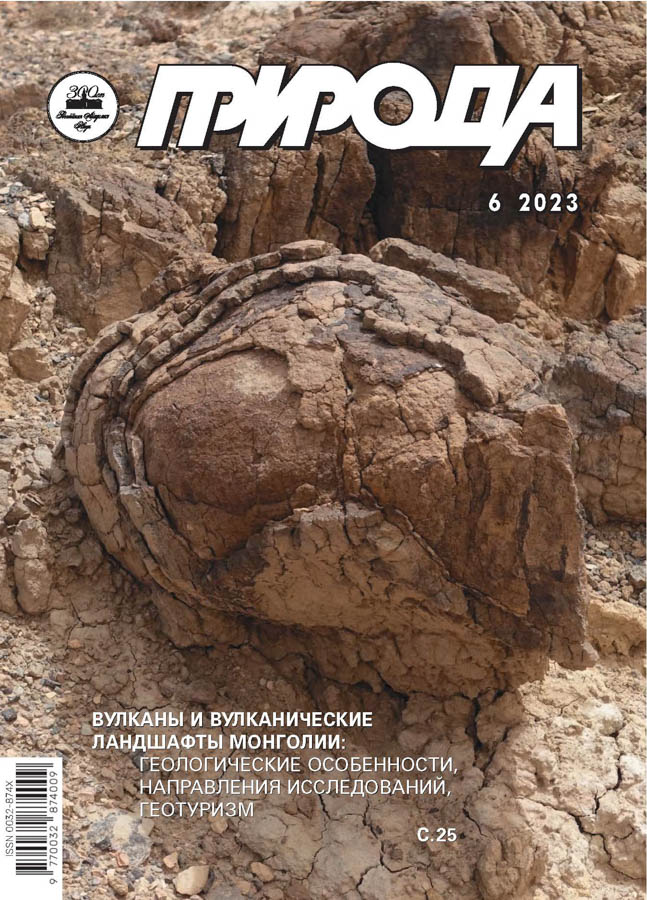No 6 (2023)
History of Paratethys
Abstract
The history of the formation, evolution, and disappearance of the inland giant Paratethys sea is considered from the time of its formation in the middle of the Cenozoic (34 million years ago) to the final separation of its waters into the Black and Caspian seas at the end of the Miocene epoch (5.6 Ma). The history of Paratethys and the organisms inhabiting it was mainly determined by its connections with oceans. Their expansion led to the uprising of the Paratethys water level to that of the World Ocean, and subsequently, its colonization by marine organisms. The drying of the straits turned Paratethys into a huge lake. The level and salinity of its waters depended on the ratio of river runoff and evaporation: with a positive water balance, the basin began to expand and desalinate, with a negative one, it regressed, saline bays and lagoons appeared in it. Obviuosly, marine biota had died in such conditions and only some organisms were able to tolerate abrupt changes in salinity, ion and oxygen regimes promoted development of specific brackish-water groups of fauna. The existing ideas about the paleogeography of this basin well reflect the intervals of high sea water levels, but do not address the results of rather signifi cant drops in sea level during its trapped episodes. Until recently, paleogeography had no appropriate methods to reconstruct such stages. Only now, with the development of seismostratigraphy, it has become possible to assess the scale and spatial patterns of paleogeographic changes with signifi cant basin reductions during regression periods.
Priroda. 2023;(6):3-14
 3-14
3-14


Phytoplankton of The Arctic Seas
Abstract
Detailed data on phytoplankton composition and spatial distribution in the high-latitude areas of the Arctic remain limited. In the context of the ongoing environmental changes (increasing warming and ice melting), understanding of the seasonal and interannual phytoplankton community dynamics is of crucial importance. Our study provides new specifying data on species composition of phytoplankton over the vast area of the Laptev Sea shelf and the East Siberian Sea shelf. In September the outer shelf plankton communities of the Laptev and East Siberian seas were characterized by typical late spring diatom species. The community of the inner shelf of the Laptev Sea (strongly affected by river water masses) was found to be transitional from summer to autumn stage of development. In general, it has been established that regional differences in the species composition of phytoplankton communities on the shelf of the Laptev and East Siberian Seas are associated with diff erences in hydrography, marine chemical conditions, and seasonal sea ice regime.
Priroda. 2023;(6):15-24
 15-24
15-24


Volcanoes and Volcanic Landscapes of Mongolia: Geological Features, Directions of Modern Research, and Geotourism
Abstract
The article presents the results of the studies on Mongolian volcanic structures: data on toponymy and interpretation of images, visual assessment of objects, research on morphometric indicators, cartographic operations, and preparation of thematic illustrations. We consider the most representative sites with volcanic landforms and various volcanic edifi ces of diff erent degrees of preservation and present a list of the 25 most illustrative areas from more than 160 volcanic structures located in seven regions of Mongolia. The fi rst version of the catalog of objects with important information for the geotourism development has been created. Volcanoes, volcanic landscapes, and outcrops of igneous rocks of Mongolia are essential objects for science and education, and may be of interest for thematic tourism.
Priroda. 2023;(6):25-40
 25-40
25-40


Pygocephalomorphs — Late Paleozoic “Shrimps” and “Crayfish”
Abstract
Pygocephalomorphs are ancient crustaceans that inhabited marine and fresh waters during the Late Paleozoic and disappeared during the Great Permian extinction. Despite the outward resemblance to lobsters and shrimps, pygocephalomorphs belong to the peracariids, a group that includes woodlice and amphipods. Therefore, they are one of the clearest examples of convergence among the diversity of arthropods. In the fossil record, the remains of these animals are quite rare, and each new discovery sheds light on the evolution and lifestyle of these mysterious crustaceans.
Priroda. 2023;(6):41-51
 41-51
41-51


Once again Eudialyte: the 31th Natural and the First Synthetic
Abstract
One of the most chemical and structural complicated mineral, zircon-silicate eudialyte, was discovered 200 years ago, however it is still an object of studies. This article reports about the Special Issue of the journal Minerals, which includes 13 articles on eudialyte crystal chemistry, mineralogy, and petrography. Moreover, recently the eudialyte group has been completed by a new mineral, the 31st member, selsurtite. Very substantial reports consider the eudialyte synthesis and new methods of mineral decomposition for extraction of some useful elements from its structure.
Priroda. 2023;(6):52-54
 52-54
52-54


Speculations on Nature Reserve Science. Epitaph
Abstract
The article overviews and analyzes scientifi c work in the Kandalaksha State Nature Reserve. The state of the so-called “Nature Reserve Science”, i.e., scientifi c research in protected areas, despite its ostensible well-being raises serious concerns among biologists for its future. The lack of a labour pool and funding, outdated equipment and methodological procedures, the lack of interest in the results of scientifi c work, inaccessibility of the collected information to the general scientifi c community, and the lack of prospects for development have led to the almost complete degradation of scientifi c work in the nature reserve system.
Priroda. 2023;(6):55-64
 55-64
55-64


Water — How Much Is in This Word…
Abstract
The nature of knowledge, elucidation of the relationship between the essence of phenomena and our sensory perception, science, and art are considered on an example of water. Water makes up most of the Earth’s surface, and its percentage in the human body is high. It pleases the eye, serves as a subject of study for various sciences, and is a source of creative inspiration.
Priroda. 2023;(6):65-71
 65-71
65-71


 72-72
72-72











